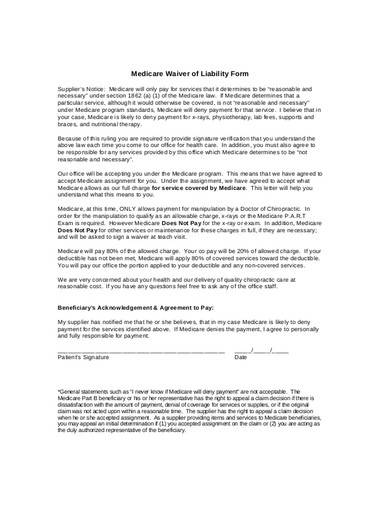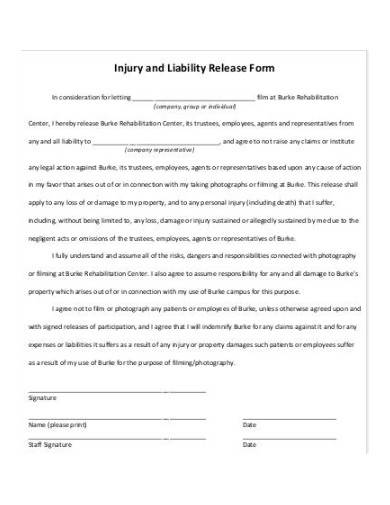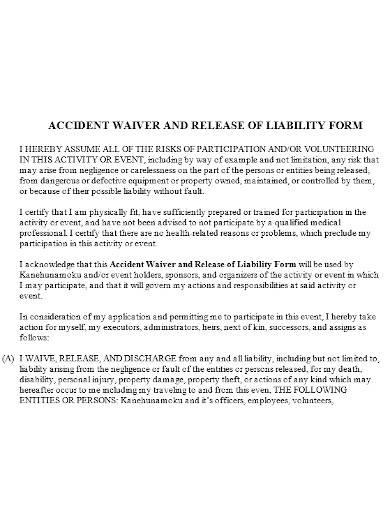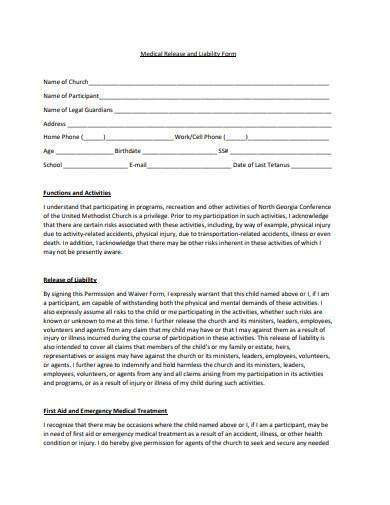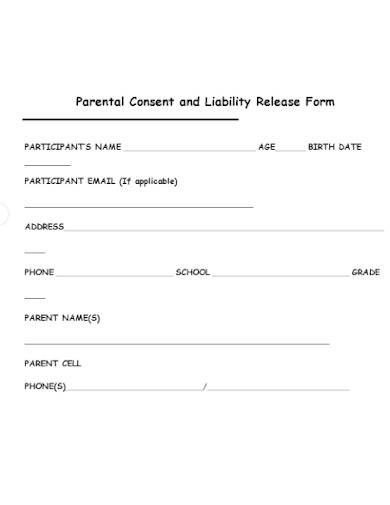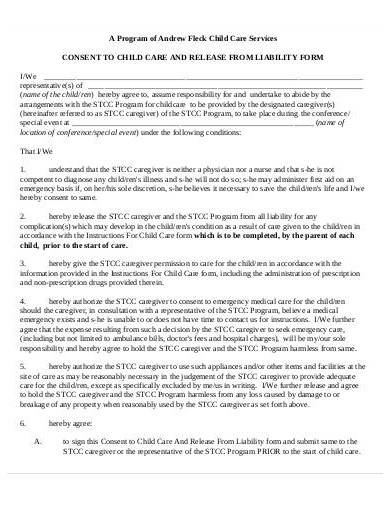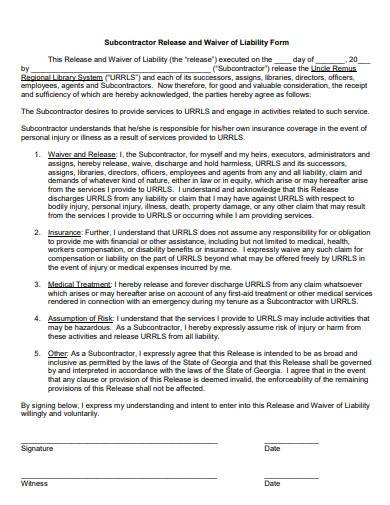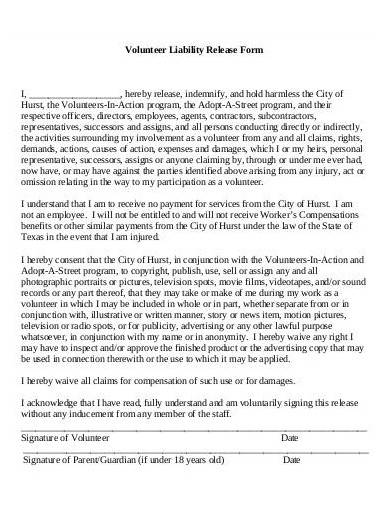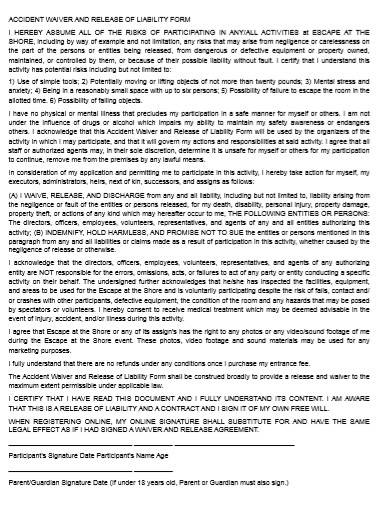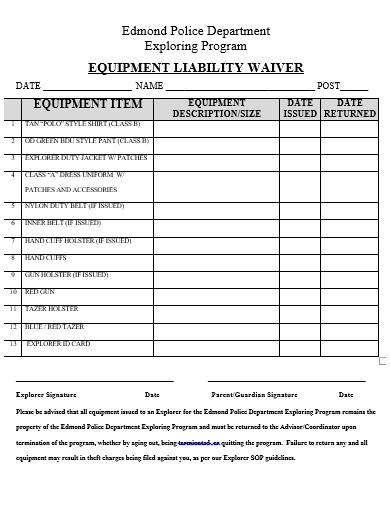In elementary, remember the small paper your parents need to sign before you can go on a field trip? That was an example of a liability form. That liability form excluded your school from being responsible if an accident happened during the field trip; however, it does not mean that the school was running away from its obligations. In fact, the liability form is an agreement between your parents and the school. Once your parents signed the liability form, it means they agreed on the condition that the school set. If your parents did not sign the form, as a form of disagreement, you would have missed the fun of a class field trip. A liability form is useful in various events or activities. If you are to make one, make sure it has a well-defined content. To know more about making liability forms, continue reading this article.
What Is a Liability Form?
When you were a student, you would have noticed the slips your parents need to sign. These slips are not just mere papers because it is an important document. If there were times when your parents did not sign any of these slips, you would probably be left at school, seated on one of your classroom chairs, unable to join an off-campus activity.
Have you ever wondered how these papers affected many school activities? It is because this form contains a waiver of liability, which means your parents agree that the school would not be held accountable for any harm that these activities could cause you. With a liability form, your parents will know what to expect in case of an accident.
Like any liability forms used in various activities or events, a liability waiver should set the terms and conditions clear on how to act up, whether an accident occurs or not. Moreover, it should contain the signature of the releaser (which are the parents) and the signature of the releasee (the school). Signing a liability waiver has been an important routine for many schools. That is why it is important to know how to make one.
11+ Liability Form Samples and Templates
1. Medicare Waiver Of Liability Form
2. Injury and Release of Liability Form
3. Accient Waiver and Release of Liability Form
4. Medical Release and Liability Form
5. Parental Consent and Liability Release Form
6. Child Care and Release from Liability Form
7. Sports Liability Release Form
8. Independent Contractor Release of Liability Form
9. Sub Contractor Release and Waiver of Liability Form
10. Volunteer Liability Release Form
11. Accident Waiver and Release of Liability Form
12. Equipment Waiver Liability Form
How to Make a Liability Form
Making a liability form could be a challenging task. But that does not mean it is not doable. Creating this form needs time and effort. So, if you are to make one, start by preparing the things you need. For more tips and tricks in making a liability form, continue reading below.
Start a Draft
Consider drafting the liability form before you jump into the task. The draft will serve as a plan in making the form. Drafts are important because they will help you outline the content of the liability form. With that, you can temporarily arrange everything from the heading to the signature. Putting things in place will give you a chance to adjust them. If you go directly to creating the actual liability form, you will not oversee the errors that might happen. Since you have a temporary draft, you can finally put everything in order and tweak it if necessary without compromising the final output. Starting the draft is simple. It is like a blank canvas where you can start painting. A blank canvas has nothing on it. That means it is up to you where to start and how to start making a liability form.
Gather Information
The content is the most important part of the liability form. However, before you get into writing the body of the form, you need to take the time to establish its header, which contains the information of the releaser. Thus, gather the important information that will complete the form. Additionally, make sure these pieces of information are correct. If you provide faulty information, this will not make the form convincing. Remember that you want to let your readers have a clear understanding of the undertaking you are to engage in. Hence, use the liability as a platform to voice out your side. Moreover, one of the reasons why these details should be visible on the form is to identify whether the form is legit or not.
Use Reference
For beginners, drafting the release agreement is most helpful. However, if you do not want to spend more time outlining the form, you can refer to old liability forms online. In other words, you can use liability form templates to complete your task. Though manually making the form ensures correctness because you can pay more attention to its content, having a template will be much easier. Most templates are editable. It will allow you to customize its suggested content and replace it with yours. More so, a template will save you some time, since it is downloadable and printable, as well.
Make It Appealing
Making the form look good is the part that you should not skip. Considering it is a formal document, you should be keen on its layout, format, and structure. Being creative is one thing you should acquire if you are to make a liability form. However, unlike flyers and posters that require colorful backgrounds, a liability form should be simpler. Novelty fonts and colored letters should be minimized. So, to make the liability form pleasing to the eyes, use easy-read-fonts. Include margin and be meticulous with spacing. These will make the form comprehensible. If you apply improper spacing, the content is either too crowded or bare. More so, formatting the liability form will make enough room for a breathing space. The last thing that you would want is to come up with a sloppily made liability form.
Anchor Simplicity
Simplicity will make a difference in the liability form. This form is not a just written simple agreement, but also an excellent communication tool. If a school is to organize an after-school sports fest, it will create a liability waiver to notify parents about the event and the risk that could harm their children. Thus, this will make the parents think about the event. It is up to the parents if they would let their children join the school activity. Having a liability letter does not mean that the school will neglect its responsibility in taking care of the students during the activity. In fact, when someone signs a waiver, they can sue the releaser in certain circumstances. That said, the liability form must be understandable and straightforward.
FAQS
What is a letter of waiver?
A waiver letter is a document that justifies that a person has waived his or her rights, or that responsibility against him or her has been waived.
Why is a waiver important?
A waiver is important because it informs a participant of an event or activity about the risks that could harm them. More so, a waiver will protect the organizer of the event from liabilities if an accident happens.
When should I use a liability form?
You can use a liability form for events that could cause risk to the goers. For example, an amusement park can release liability forms so that they will not be accountable for any damage or injury caused by the business.
Signing a liability form would change the situation. It could exclude organizers for being responsible if an accident happens during the event they organize. Or it could save a student from a school field trip accident because his parents did not sign the waiver. Making a liability form does involve not only responsibilities and payouts but also the lives of others. So, if you are to make a liability form, make sure it does not weigh on anybody’s side.
Related Posts
FREE 10+ Writing Journal Entry Samples and Templates in MS Word | PDF
FREE 10+ Double Entry Journal Samples and Templates in MS Word | PDF
FREE 5+ Stock Ledger Samples and Templates in MS Excel | PDF
FREE 10 + Revenue Recognition Samples & Templates in PDF | MS Word
FREE 11+ Liability Insurance Application Samples and Templates in MS Word | PDF
FREE 11+ Petty Cash Reconciliation Samples and Templates in MS Excel | PDF
FREE 10+ Reconciliation Statement Form Samples and Templates in MS Word | PDF | MS Excel
FREE 10+ Annuity Disclosure Form Samples & Templates in PDF
FREE 9+ Absorption Costing Samples & Templates in PDF | MS Word
FREE 10+ Prepaid Expenses Samples and Templates in PDF | MS Excel
FREE 7+ Depreciation Worksheet Samples & Templates in PDF | MS Word
FREE 10+ Turnover Ratio Analysis Samples and Templates in PDF
FREE 11+ Cost Volume Profit Analysis Samples & Templates in PDF | MS Word
FREE 10+ Bank Reconciliation Statement Samples and Templates in PDF | MS Word
FREE 9+ Balance Sheet Reconciliation Samples & Templates in PDF | MS Word

